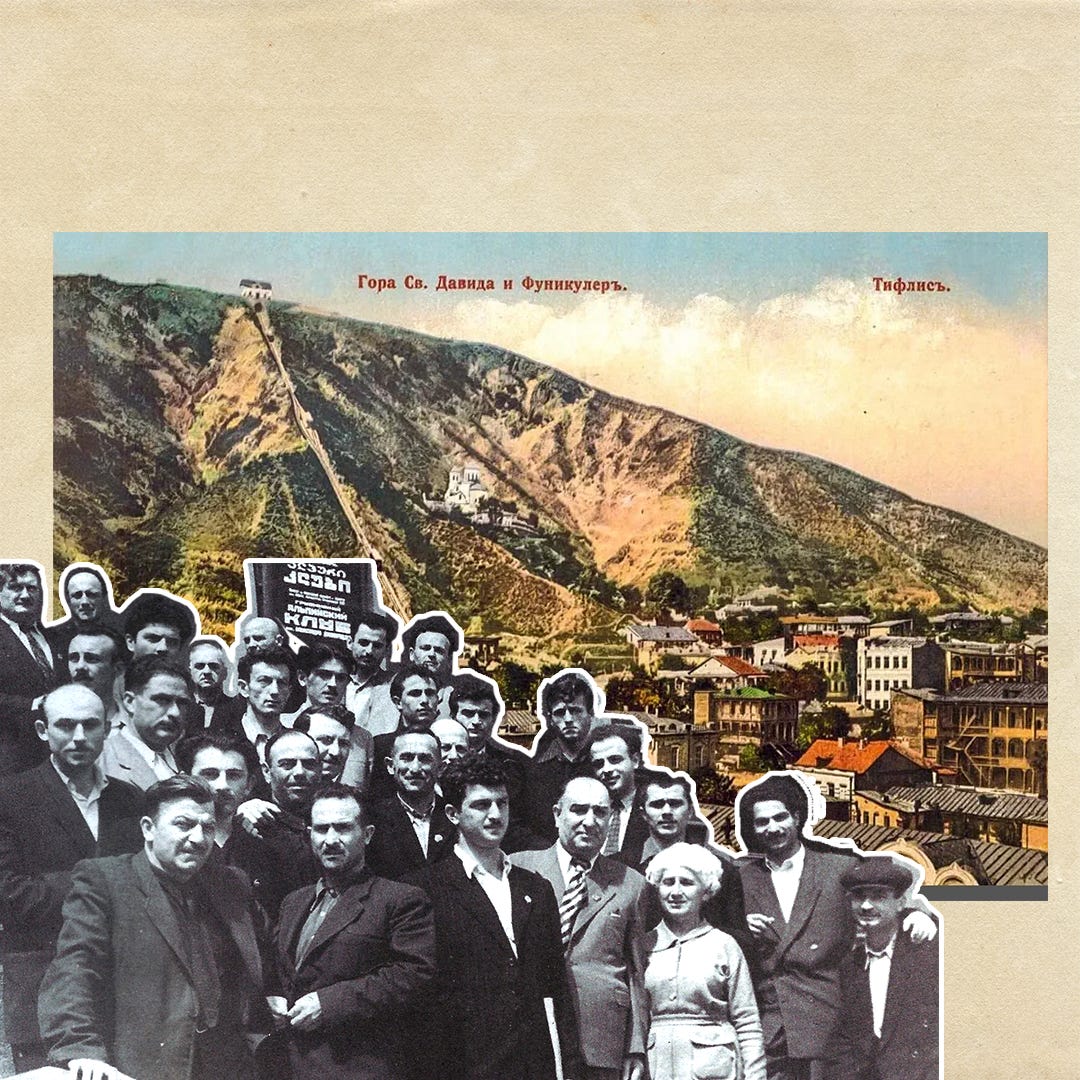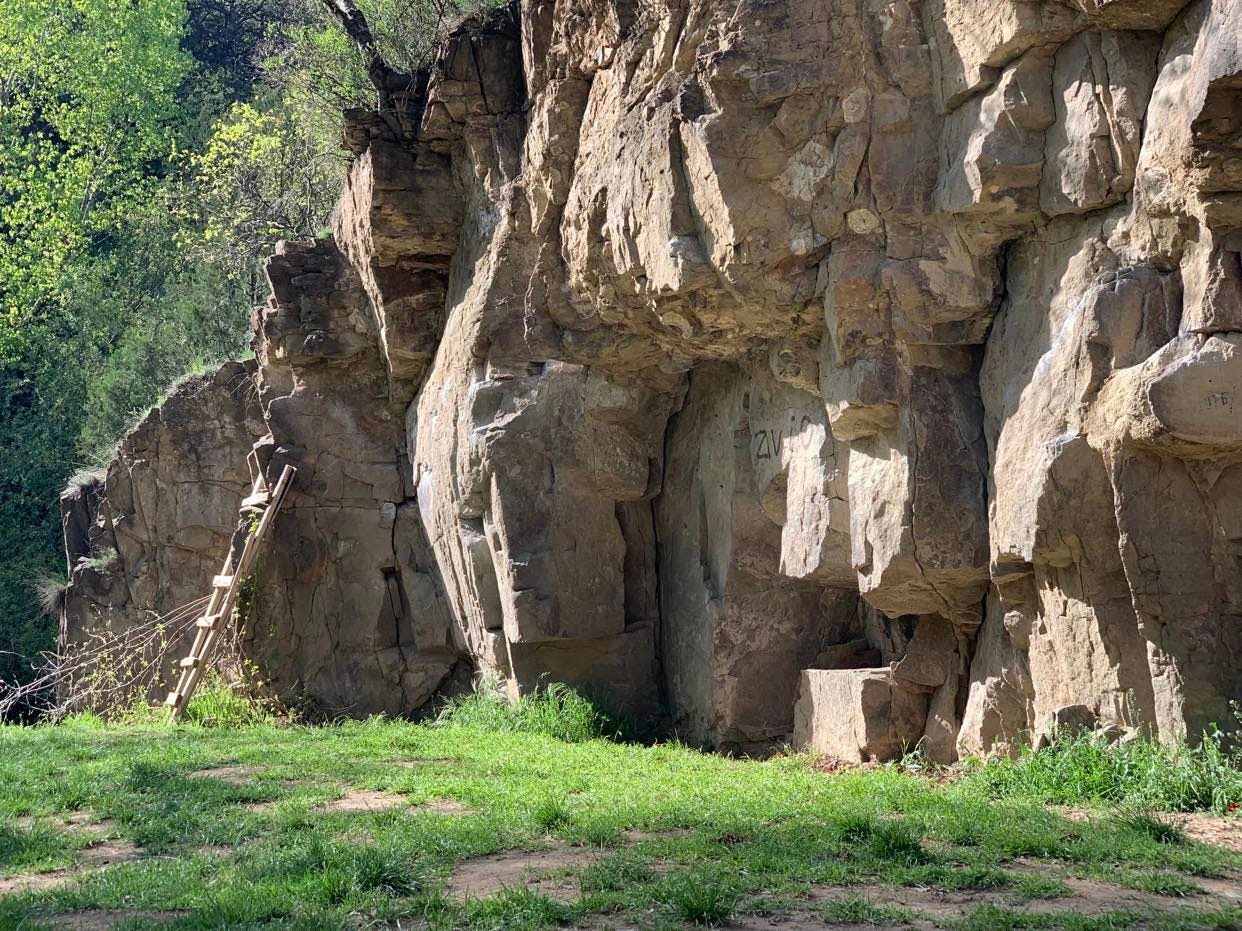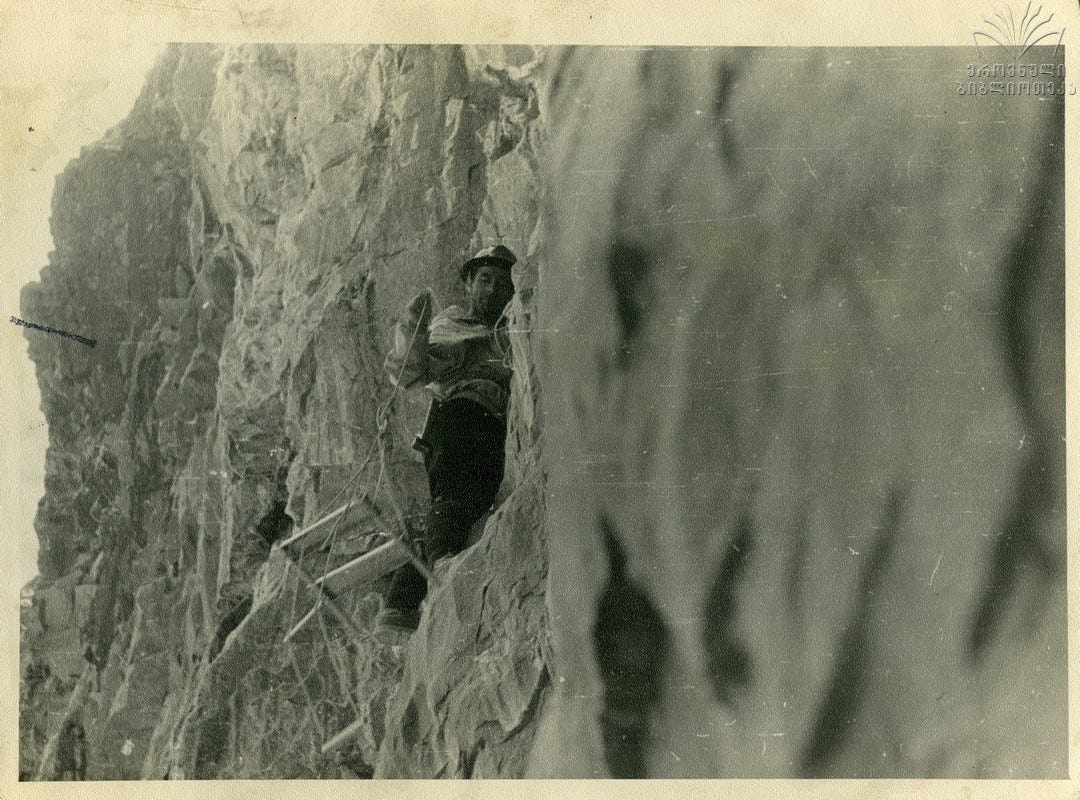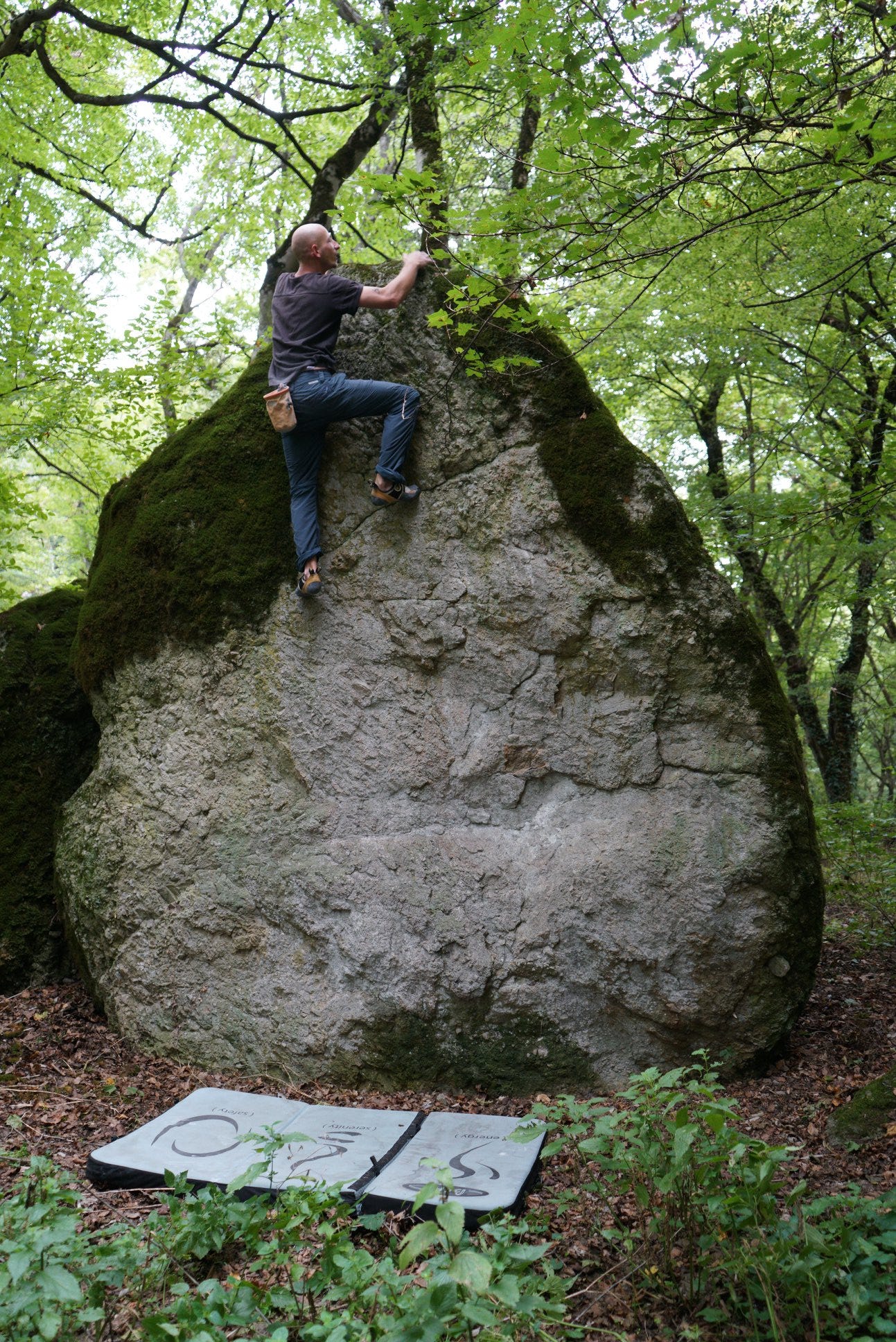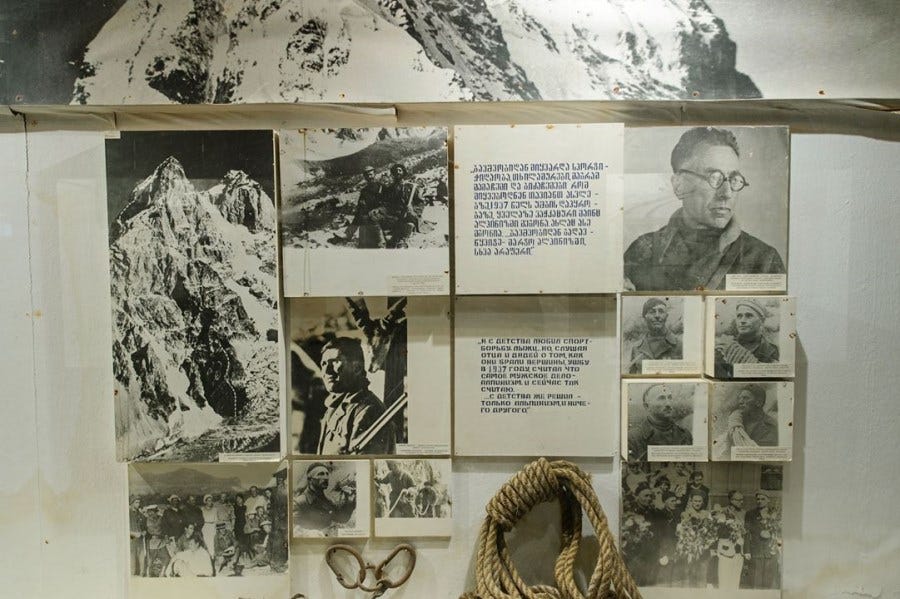Tbilisi: Mountain Microcosm
The roots of Georgian alpinism at the Georgian National Botanical Garden, and an overview of rock climbing sites in Tbilisi and beyond.
Central Tbilisi stretches from the foothills of Mtatsminda Mountain to the Mtkvari River. Mtatsminda’s varied terrain includes steep ascents, forests, plateaus, waterfalls, and canyons, with many attractions accessible by public transportation. When travel outside the city was prohibited during the Covid-19 lockdown, explorers turned to this urban “near-wilderness” to bike, hike, and climb. During this time the city constructed new trails and facilities connecting the urban foothills to Turtle Lake and the mountain resorts of Kojori and Tsavkisi, making the region safer and more accessible.
When travel outside the city was prohibited during the Covid-19 lockdown, explorers turned to this urban “near-wilderness” to bike, hike, and climb.
The connection between Tbilisi’s natural attractions and Georgia’s extreme landscapes is nothing new: Georgia’s vaunted alpinism community began within the city limits, in the National Botanical Garden of Georgia (NBGG) The activities of the club were officially recognized by the Soviet Union in 1935 as the “Georgian Alp Club.”
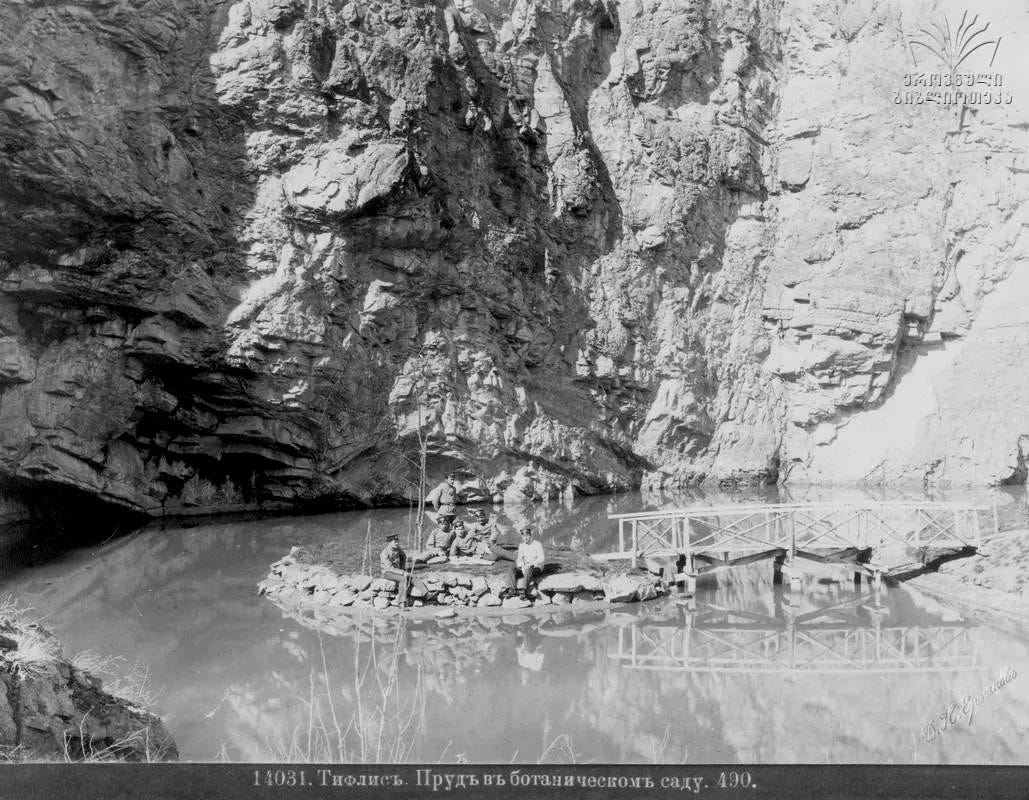
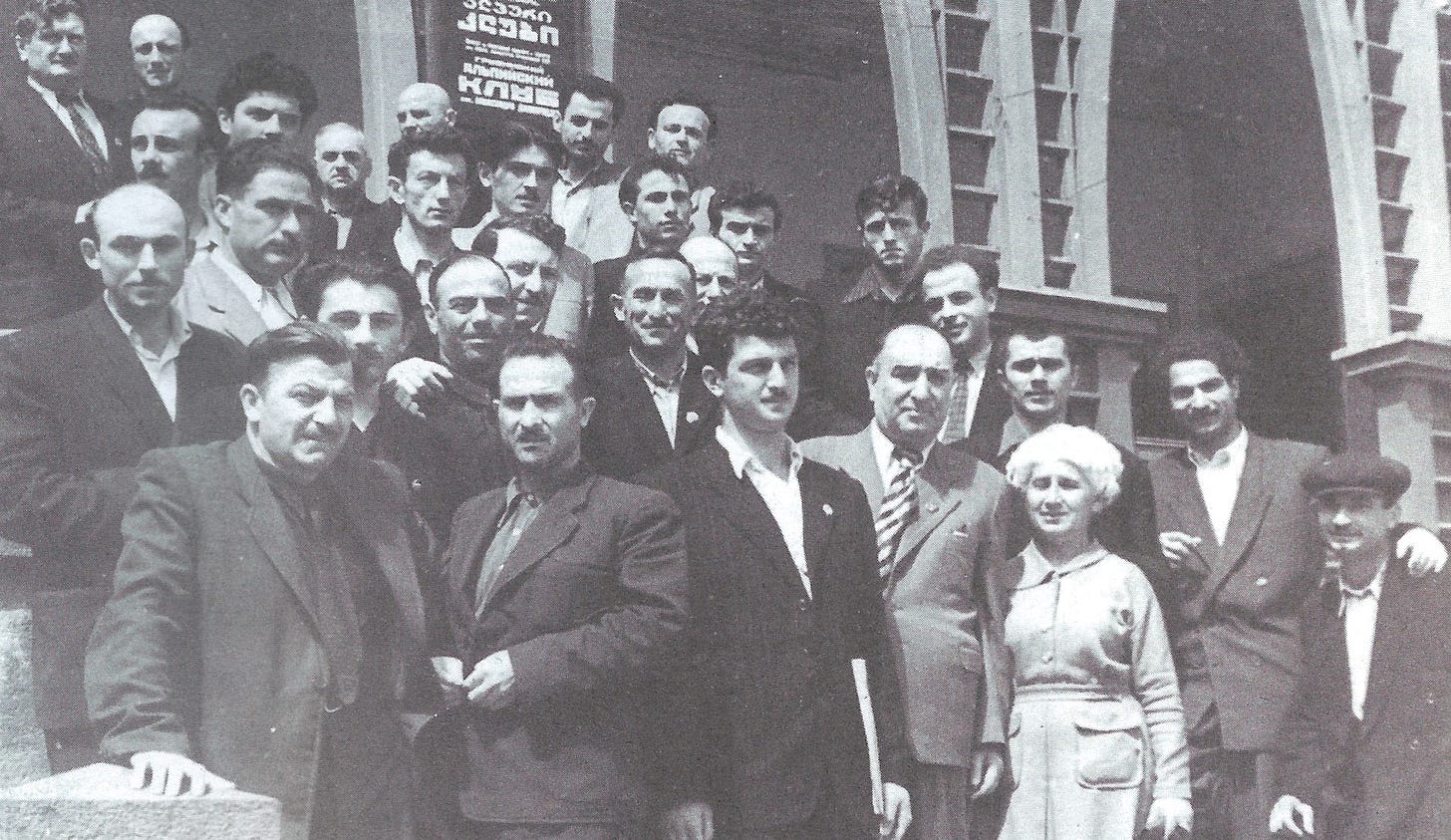
The cliffs of the NBGG in Tbilisi are located 15 minutes from the Mother of Georgia monument on Narikala Ridge, near Freedom Square. Here, the climbers practice both for sport and to prepare for Alpinism expeditions in mountainous regions of Georgia such as Chaukhi mountain in Kazbegi and Ushba in Svaneti.
The trail to the cliffs offers picturesque views through Leghvtakhevi gorge, and signs on the ground identify different plant species. The cliffs rise a small grassy clearing along the Leghvtakhevi River. To improve access, The climbing community constructed two wooden pedestrian bridges to link the area to the Botanical Garden trail system.
The climbing wall offers both bouldering and sport climbing sectors, with options for beginners and skilled climbers (route map). The alpinist community gathers there, to picnic, play frisbee, and discuss upcoming adventures. For many years, this pocket in the city has hosted the tight-knit community of alpinists and wilderness advocates. This community cares for climbing sites throughout Georgia and establishes new regions recognized by the global alpinist community.
Alpinism gained popularity in the 1940s throughout the Soviet Union. Since that time, many notable Georgian alpinists and mountaineers trained at the NBGG cliffs, including Mikheil Khergiani, known as the "Tiger of the cliffs" and national sport climbing champion from Mestia.
Other climbing attractions near Tbilisi include Birtvisi Canyon (route map), a popular day trip for bouldering, backpacking, and camping. The canyon is full of distinct boulders, characterized by a sharp surface that differs from Tbilisi’s rock type.
Further afield is Chiatura, about 4 hours from the capital. For non-climbers, the place is associated with mining and the first urban cable car system. The Kvirlia River Gorge features routes for all abilities. The famous Katskhi Pillar, topped with a monastery, is now off-limits to climbers, so climbing enthusiasts created an alternative climbing site at Sveri Camp. The camp includes a guest house maintained by the climbing community.
Mestia, a village in Svaneti, about 8 hours from the capital, is considered the birthplace of Georgian Alpinism and mountaineering. Svaneti features diverse landscapes and the high peaks Ushba (4,710 meters/15,453 feet) and Tetnuldi (4,858 meters/15,938 feet). Giorgi Abalakov, a Georgian mountaineer who made a number of notable ascents in the Caucasus range, completed a solo ascent of Ushba's north summit in 1933. Many famous alpinists, such as Reinhold Messner have summited these peaks. The town includes the Mikhel Khergiani museum, located in a traditional Svanetian stone tower house, which has been restored to its original state (see museum working hours and info). It contains a collection of Khergiani's personal belongings, including his climbing equipment, photographs, and documents. The museum also features exhibits about the history of mountaineering in Svaneti and the Caucasus region.
As more people enjoy the urban near-wilderness, they not only have a chance to appreciate the beauty of their surroundings but also may develop a greater sense of responsibility to protect and preserve these areas. By using these natural resources, people may become more invested in their upkeep, leading to increased efforts to conserve and maintain these critical environments for future generations to enjoy.





